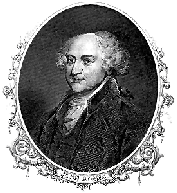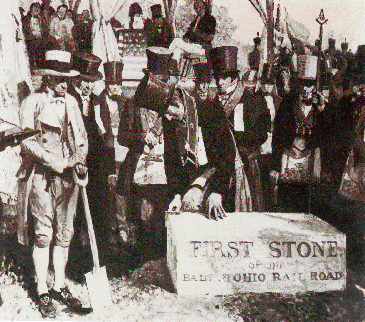 |
| John Adams |
Every July 4th, Americans celebrate the day in 1776 when the Continental Congress, meeting in Philadelphia, unanimously adopted the Declaration of Independence. The Declaration proclaimed: "We hold these Truths to be self-evident, that all Men are created equal, that they are endowed by their Creator with certain unalienable Rights, that among these are Life, Liberty, and the Pursuit of Happiness . . . That these United Colonies are, and of Right ought to be, Free and Independent States; that they are absolved from all Allegiance to the British Crown, and that all political Connection between them and the State of Great-Britain, is and ought to be totally dissolved." The document closed with the delegates mutually pledging to support the Declaration with "our lives, our Fortunes, and our sacred Honor."
John Adams, one of the signers and a future President, wrote his wife Abigail: "I am apt to believe that this day will be celebrated by succeeding generations as the great anniversary festival . . . . It ought to be solemnized with pomp and parade, with shows, games, sports, guns, bells, bonfires, and illuminations, from one end of this continent to the other, from this time forward forevermore."
Philadelphians marked the occasion on July 8th —bells rang, bands played, and the Declaration was read aloud. The following year they held a grand first anniversary fete. But Independence Day observances were relatively rare until after the War of 1812. In 1826 the Nation observed the fiftieth anniversary of the Declaration with a "year of national jubilee." Incredibly, that Fourth of July, Thomas Jefferson and John Adams, the author of the Declaration and a fellow member of the committee who drafted the document, both died within hours of each other.
Soon the practice began of scheduling major events on the Fourth. Construction of the Erie Canal began in 1817. In 1828 ground was broken in Baltimore for the Baltimore and Ohio Railroad, while in Georgetown, President John Quincy Adams broke ground for the Chesapeake and Ohio Canal. Both occasions held significance for Army Engineers. They conducted preliminary surveys and surveyed the final route for the railroad. Lt. George W. Whistler oversaw the laying of the first section of track in 1829. Engineers also conducted surveys for the canal and prepared plans for locks.
By the twentieth century the volume of accidents related to Independence Day celebrations, largely related to fireworks displays, helped prompt state regulations on the sale and use of fireworks. Congress declared the Fourth a federal holiday in 1941.

Groundbreaking ceremony for the Baltimore and Ohio Railroad,
July 4, 1828. (Library of Congress)
* * *
July 2001